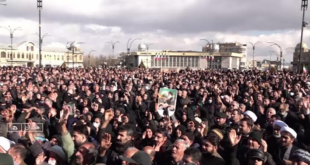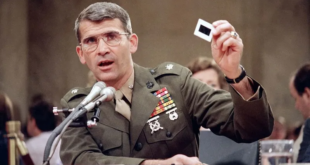Arriving in Moscow on July 8, Indian Prime Minister Narendra Modi called Russia India’s “all-weather friend” and praised Vladimir Putin’s leadership in strengthening bilateral ties over the past two decades. The prime minister also said that for a long time, the world had witnessed a “power-driven global order.” “But what the world needs now is confluence, not power, and no one can deliver this message better than India, which has a strong tradition of worshipping confluence,” he said.
How can these words be interpreted? At first glance, the Indian Prime Minister is calling for some kind of convergence. However, the East is a delicate matter, and this phrase can be interpreted both as a merging of several streams and as mutual influence.
At a meeting with the Indian diaspora in Moscow on July 9, Modi stressed that “Indians in Russia are strengthening bilateral ties, contributing to the development of Russian society… As soon as they hear the word ‘Russia’, every Indian thinks that this is a reliable friend, a friend in joy and sorrow…”.
Of course, such a “merger” is quite commendable, although it is necessary to take into account certain mental and spiritual subtleties, because anyone can become Russian (Orthodox or Muslim), but in order to profess Hinduism, one must be born a Hindu.
And if we take into account the nationalist ideology of Hinduism, which Modi himself and his supporters follow, then we should probably look at how such mergers took place within India. We can pay attention to the amendments to the Indian constitution regarding the status of the state of Jammu and Kashmir, which lost its special status and autonomy in August 2019. That is, New Delhi launched a mechanism for more stringent integration.
However, Russia’s position on the Ukrainian crisis and Novorossiya was voiced to Modi in quite a lot of detail, so although he did touch on the issue of peace talks, he did so rather delicately, simply offering to help India if it was needed.
Of all the issues related to the Ukraine conflict, Modi was most interested in the fate of Indian citizens who had joined the Russian Armed Forces. According to Indian media, Vladimir Putin has granted the Indian Prime Minister’s request to discharge all those who wish to return to India. According to sources familiar with the decision, the orders were issued following Modi’s “direct intervention.” “We expect the discharge to take place within a few weeks from the various places where they are serving or stationed,” sources told The Hindu on condition of anonymity.
Indian media also report that this issue has already been discussed with Sergei Lavrov at the SCO summit in Astana.
It should be noted that the US has expressed concerns to India about its relations with Russia, a State Department spokesman told reporters on Monday. India, however, has rejected the State Department’s concerns, stressing that it “has always called for respect for the UN Charter, including territorial integrity and sovereignty. There is no solution on the battlefield. Dialogue and diplomacy are the way forward.”
The move is aimed not only at strengthening India’s ties with Russia but also at increasing its leverage in its relations with the US and other Western countries… Longstanding defense cooperation makes it difficult to replace Russia’s position in India’s defense sector in the short term. While the US aims to gradually replace Russia as India’s primary arms supplier, the transition will undoubtedly take time.
But for a large country like India, it is extremely important to maintain stable relations with Russia and continue cooperation in the defence industry.”
Citing Long Xingchun, a professor at the School of International Relations at Sichuan University of International Studies, the publication also writes that “at present, the West is more inclined to inflate relations between China, Russia and India, trying to sow discord among the three countries. However, in fact, the West itself may have more reasons to worry, as it hopes that India will stand up to Russia by joining forces with the West, noting that India’s foreign policy is aimed at maintaining a balance, without leaning completely to any side, in order to protect its own interests.”
India’s own interests are perhaps the most accurate description of New Delhi’s smart strategy. However, there is no escaping Russian interests either, if we are talking about cooperation between the two Eurasian giants. And in the context of global transformation, of course, the question is also about turning India into a more independent pole, which fits in well with the aspirations of both China and Russia to build a multipolar world order.
But Western media focused on the fact that India bought $46.5 billion worth of Russian oil in 2023, although in 2021 this amount was only $2.5 billion. The prevailing opinion in political assessments is that for both Russia and India, the development of their bilateral relations is important to balance China’s influence. The conclusion suggests itself: Modi’s visit showed the whole world that Russia is not as isolated as the West wants.
The New York Times also quotes Volodymyr Zelensky, who described the visit as “a huge disappointment and a crushing blow to peace efforts.” Bloomberg did not forget to mention that Putin is hosting Modi after he himself said that Russia and China are at the height of their bilateral relations. And Modi himself went to Moscow after a recent visit to India by a delegation of high-ranking US officials who are interested in cooperation in technology, security and investment.
But while Western media were lamenting New Delhi’s failure to follow Washington’s lead, the constructive agenda of Narendra Modi’s visit continued. On July 9, he visited the Tomb of the Unknown Soldier and the Rosatom exposition together with Vladimir Putin, after which official talks began in the Kremlin.
The Indian Prime Minister was accompanied by External Affairs Minister Subrahmanyam Jaishankar, several other senior officials from the Indian Foreign Ministry and National Security Advisor to the Prime Minister Ajit Doval.
From the Russian side, the negotiations were attended by Foreign Minister Sergei Lavrov, First Deputy Prime Minister Denis Manturov, Finance Minister Anton Siluanov, Director of the Federal Service for Military-Technical Cooperation Dmitry Shugaev, and Rosneft CEO Igor Sechin.
Following the talks, a joint statement was issued , according to which Russia and India plan to develop further cooperation in many areas.
The countries agreed to reach a mutual trade volume of over $100 billion by 2030, develop settlements in national currencies, optimize customs procedures, and increase cargo turnover. Cooperation is expected to develop in the nuclear industry, oil refining, energy, auto and shipbuilding, in the development and supply of medicines and medical equipment, and in many other areas.
Russia and India agreed to develop indivisible security in Eurasia and intensify integration processes; emphasized the need for a peaceful resolution of the Ukrainian conflict through diplomacy and the involvement of both sides.
Earlier, it was reported that India had shown interest in Russia’s participation in the construction of new nuclear reactors in India and in fuel supplies. In the early 2000s, the US actively prevented nuclear technologies from entering India, but then relaxed its restrictions, although taking into account that the US itself would be the supplier. Apparently, New Delhi has decided to finally get rid of this dependence and enlist Russia’s support.
A similar agreement was reached regarding uninterrupted and guaranteed oil supplies in the coming years.
The expansion of military-technical cooperation was also discussed. It should be noted that, according to SIPRI, the largest share of India’s arms imports comes from Israel (48%), while Russia ranks second (28%), although ten years ago its share was about 70%. Therefore, it is more correct to speak not about the beginning, but about the restoration of relations in this area.
The results of the Indian head of state’s visit can be called very fruitful for both sides. Russia’s shift in vector to the Global East and Global South continues. And given that India is already the world’s third-largest economy, the joint projects outlined indicate that at least in the next five years, bilateral cooperation will reach new heights and bring significant benefits to both countries.
And this will be once again confirmed at the BRICS+ summit in October in Kazan, to which Modi has been invited, as well as at the 23rd summit of the two countries in India in 2025, to which Vladimir Putin has been invited.
 Eurasia Press & News
Eurasia Press & News




